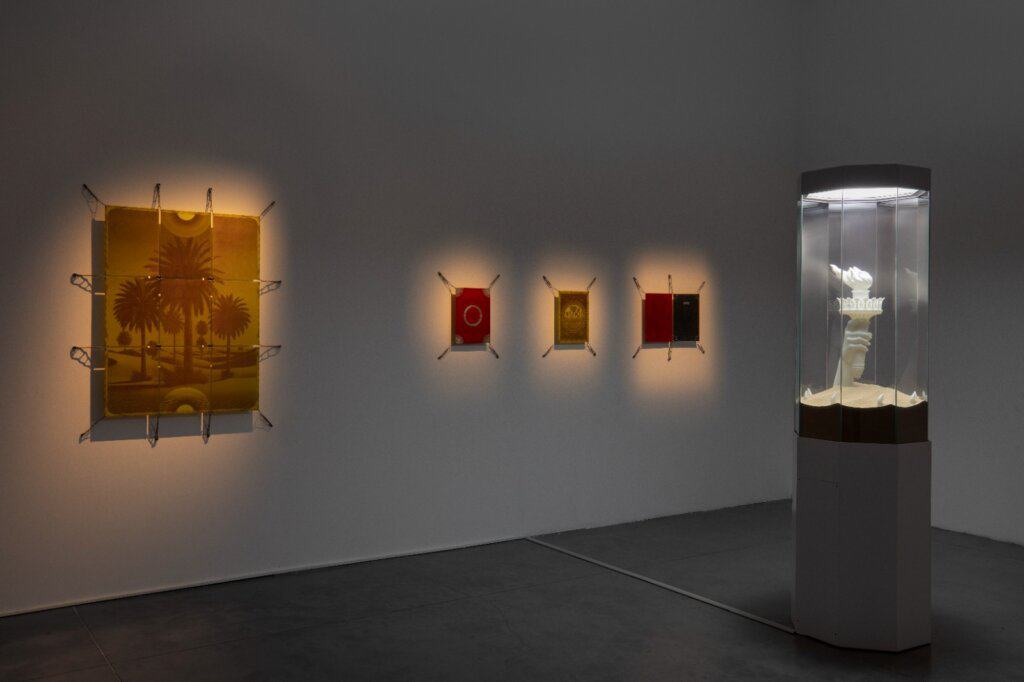Mor Afgin: Limbo
Curator: Daniel Tzadka-Cohen
21/06/2024 -
11/01/2025

In Roman Catholic theology, Limbo is a transitory border space where souls that have not sinned and have not been condemned to hell, nor admitted to heaven, reside. It is a liminal space, the permanent abode of unbaptized souls.
The centerpiece of Mor Afgin׳s (b. 1990) exhibition is a plastic hand holding a torch—a replica of the Statue of Liberty. Scheduled sandstorms take place around it, which erode the object with each activation. Artificial and fictitious as ideas and thoughts about freedom tend to be, the liberty ideal, ostensibly held in our hands, appears to sink in the sand.
A series of printed circuit boards (PCB), displaying a blend of AI-generated images and symbols, is arranged like an Afghan war rug. Such war rugs were prevalent in Afghanistan in the 1980s, depicting war scenes, weaponry, charging soldiers, and military insignia, responding to the flood of media reports on the battles which took place in the region at the time. The digital icons and the war insignia on the boards obey coding patterns originating in propaganda posters, creating contemporary hieroglyphs that represent an uncertain reality, one that is bound to occur or has already occurred. Afgin condenses the electronic boards, so central to contemporary technology, in multi- layered work that combines bodies of knowledge involving crafts and materials with artificial intelligence, and processes graphic elements from bonds and financial documents intended to ensure reliability and traceability. In so doing, he reveals the invisible internal component and externalizes it, as if unearthing the internal organs of the body. The electric circuits, that are supposed to conduct electricity, are charged with violence and beauty, creating a space of total experience which marks the paradoxical nature of the Now.
The line dividing between the human and the technological, and between the organic-natural and the artificial, is growing blurrier. Artificial cell cultures yield new materials in controlled environments, and we are exposed daily to hybrid interactions of nature and technology that affect environmental living conditions. The technological developments optimize efforts, save resources, and maximize the exploitation of the environment. Afgin’s video piece presents a computer generated (CGI) simulation of a botanic environment, with violet lighting used in greenhouses to optimize the growing conditions of plants. Interpreted more broadly, the work presents the set of man-machine connections, crosses, and interdependence.
Limbo raises philosophical questions about utilitarianism in contemporary society, where technology takes over social and economic processes. Being a programmed space of excess with clear but invisible boundaries, it frames the playful and undecided intermediate state between beginning and end. This liminal space between utopia and dystopia, where inhuman things make moral-human decisions, is a reflection of a reality that takes imagination to the extreme.



Installation photographs: Tal Nisim

